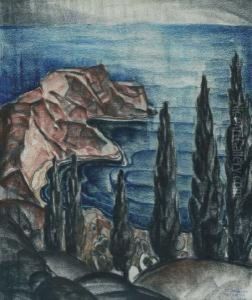Jacobus Gerardus Veldheer Paintings
Jacobus Gerardus Veldheer, commonly known as Jaap Veldheer, was a Dutch artist born on December 14, 1866, in Haarlem, the Netherlands. His artistic journey began at the Royal Academy of Fine Arts in The Hague, where he studied under the guidance of prominent teachers such as Frederik Jansen and Willem Maris. Veldheer's education continued in Paris, where he was influenced by the French Impressionists, which is evident in his use of light and color.
Veldheer was known for his versatility across different mediums, including painting, graphic design, and book illustration. He was an accomplished etcher and lithographer, creating works that featured landscapes, portraits, and scenes of daily life. His style evolved over the years, reflecting the changes in artistic movements of his time, but he remained dedicated to capturing the essence of Dutch culture and landscape.
Beyond his own creations, Veldheer played a significant role in the Dutch art scene. He was a member of various artistic societies, including 'Arti et Amicitiae' (Art and Friendship) in Amsterdam and 'St. Lucas' in The Hague. These associations allowed him to collaborate with other artists and contribute to the development of Dutch art during the late 19th and early 20th centuries.
One of Veldheer's notable contributions was his revival of the neglected art of woodcut printing. He was instrumental in bringing this medium back to prominence in the Netherlands, and his woodcuts are considered some of the finest examples from that period. His work in this area demonstrates his commitment to craftsmanship and his interest in exploring traditional techniques.
Veldheer's art was well-received during his lifetime, and he participated in numerous exhibitions both in the Netherlands and abroad. His works are now part of many Dutch museum collections, including the Rijksmuseum in Amsterdam and the Teylers Museum in Haarlem.
Jacobus Gerardus Veldheer passed away on February 27, 1954, in Laren, leaving behind a legacy that continues to be appreciated by art historians and collectors. His dedication to his craft and his impact on the Dutch art community cemented his place among the notable artists of his time.
